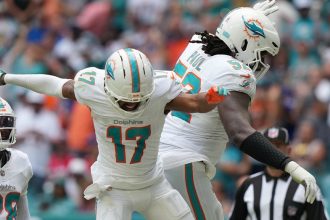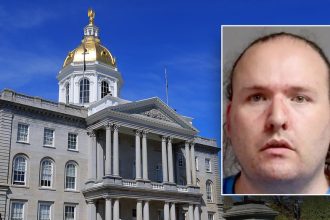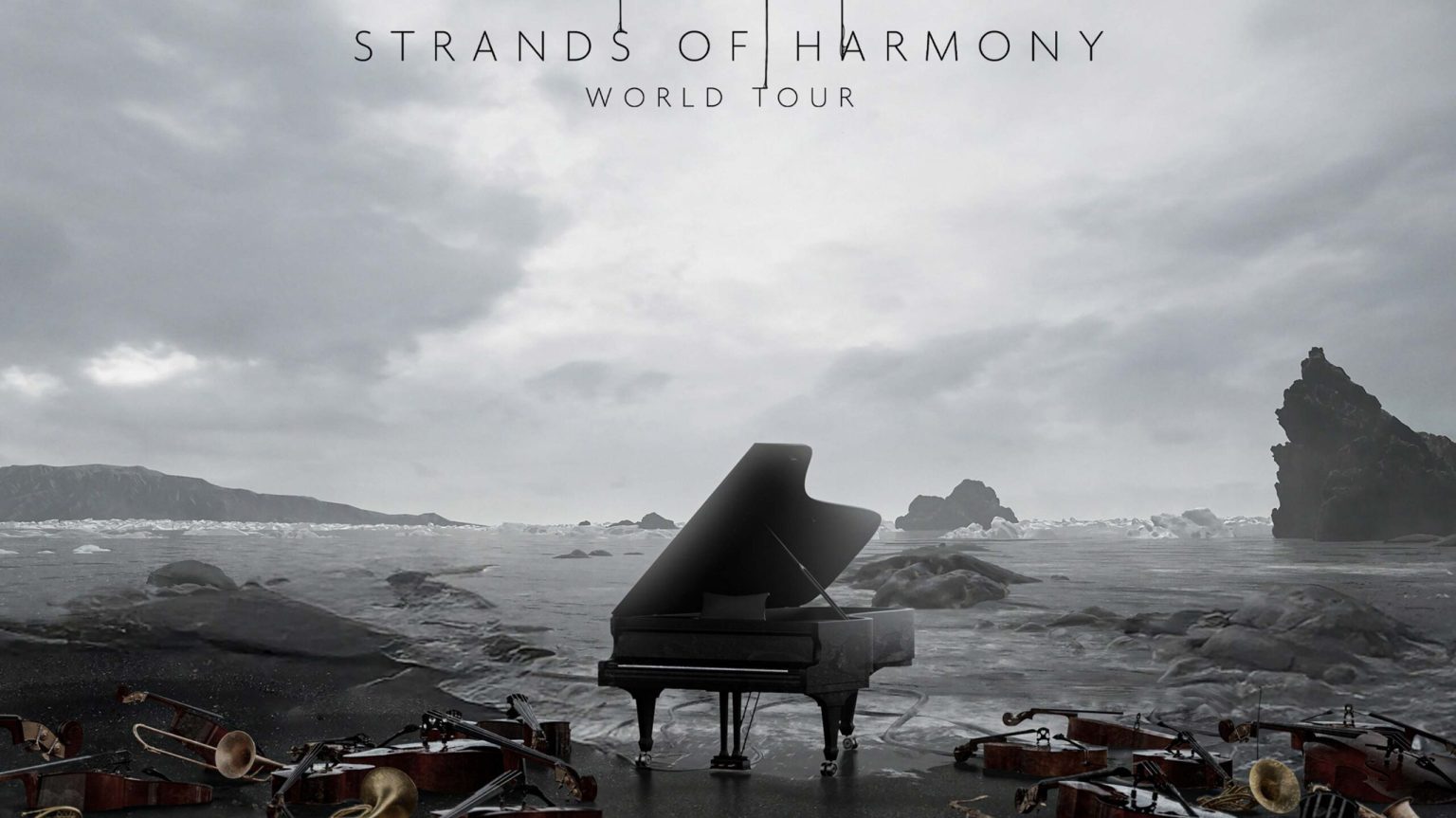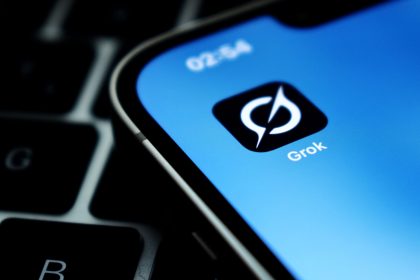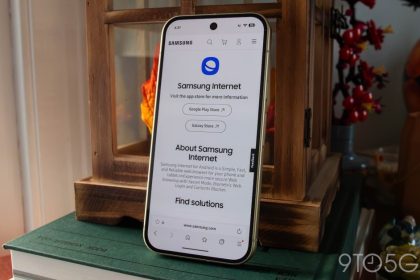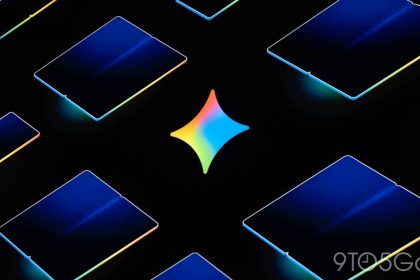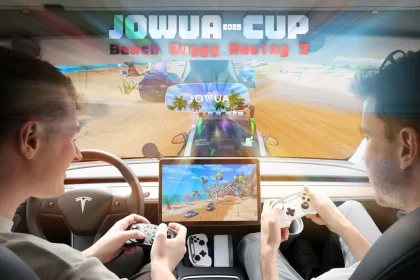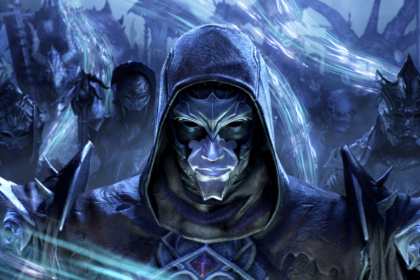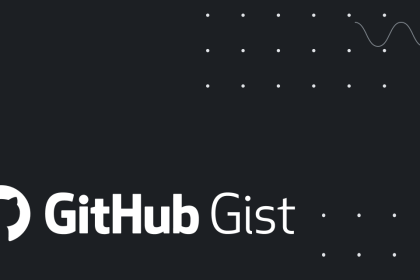Note: This interview contains no spoilers for Death Stranding 2.
It’s a big time for Death Stranding.
The second game in legendary game designer Hideo Kojima and Kojima Productions’ action-adventure series, Death Stranding 2: On the Beach, just launched to significant acclaim. A live-action adaptation from beloved film studio A24 is in the works. And a global concert tour called Strands of Harmony from Tokyo-based pop-culture concert company Soho Live (and, for the Canadian stops, Toronto-based production company Kashamara Productions) kicks off this November.
That last addition to the series is particularly interesting. Anyone who’s played Death Stranding will sing praises of the memorable music, which consists of a powerful mix of original pieces like composer Ludvig Forssell’s “BB’s Theme” and licenced tracks like Low Roar’s “Don’t Be So Serious.” Naturally, then, Death Stranding would be ripe for a concert experience, especially one with HD projections of scenes from the highly cinematic game.
To learn more about both the concert and Death Stranding 2: On the Beach, MobileSyrup sat down with Forssell back in May. While he was a Kojima Productions employee during the production of the first game, he was independent by the time of On the Beach, meaning his involvement in the concert was likewise proposed to him by Kojima Productions. He told us about the collaboration with the developer and Soho Live, the balance of which songs to include from each game, some of the inspiration behind the music of the sequel and more.
What was your role in all of this? You said they’d already had a lot of ideas. Were you able to pitch your input and evolve the sort of shape of it? What sorts of contributions did you make, besides obviously composing the original music?
The OST is available to stream RIGHT NOW on all major platforms. Here are some link:
🎧Apple Music:https://t.co/qICgMsszwJ
🎧Spotify:https://t.co/9XcvEAuxf9
— Ludvig Forssell (@Ludvig_Forssell) June 27, 2025
Forssell: We had a meeting pretty early on, and they still hadn’t started on any of the arrangements or anything like that. So I got to pick the minds of the people at Soho and Chad [Seiter], who’s doing the arrangements for the concert, and collaborate on how we were going to approach making Death Stranding‘s music, which is — originally, at least for the first game — very atmospheric and ambient and synth-based and making that into a fun live experience with the orchestra. And picking their minds, because they have done it before, trying to figure out what they were trying to go for, and giving my five cents on how to approach that from my headspace. So that’s where we started off, but it’s been a very close collaboration regarding each and every single arrangement of my music with Chad, talking about what the core of each track is. For example, there might be a track that has a guitar solo. If we wanted to do that, Chad would come up with ideas like, “Oh, I want to try this with brass or something,” and going back and forth.
And I definitely personally enjoy being very hands-on with all of that, even though arranging for a full orchestra like this out of something that is a very synthetic score like Death Stranding is not really my wheelhouse. But I definitely have been trying as much as I can to give input as to what the music is actually trying to say. Because sometimes, you might get an idea where something is interpreted by using a certain instrument, or something is omitted, and you might want to give input as to like, “No, this is actually the core of the track and it needs to be focused — give this to the main vocalist,” or something like that.
Death Stranding is known for having great music, both from yourself in terms of original compositions and the licensed tracks. As you’re figuring out the concert, how do you balance how many of your own pieces you want to include vs. how many of the licensed tracks? I know Low Roar is confirmed to be one of the latter that’s featured in the concert. And then there are obviously two games now, not just the first one. So, how do you balance the licensed tracks vs. the original songs, and then how many from DS1, DS2 — that sort of thing?
Forssell: One thing to take into consideration is that the concert itself is not just an oral experience; it’s also a visual experience. So there’s a whole thing of storytelling and taking in everything all at once for the people coming to see the show. And I feel like that’s where I lean a bit on the people at Soho with their expertise on how they want to tell a story throughout visuals and music. So balancing in between something that’s maybe a bit more action-focused and in-game focused, or other cutscene-based music that I’ve done with the more mellow stuff from Low Roar, for example, and other licensed music. That’s something where I’m not butting in too much. They had a pretty good idea of what the balance would be from the beginning. I’m not sure, I think it’s somewhere around like 70 per cent or 65 per cent my stuff, and then 30 to 40 per cent licensed music, which I felt was a pretty good balance from the get-go. I obviously wanted as much of my stuff in there as possible. [laughs] But I think if we’re being real, a lot of people that play the game, they really lean into the musical side of it, thinking about the vocals and stuff from Ryan [Karazija] of Low Roar and all of that. So having something that pleases the fans, especially with the vocalists that are going to be there for the show — the balance is something that Soho really figured out a pretty good starting point right from the get-go.
One thing to mention is that I’ve been sort of pushing to get more than 50 per cent of the concert to be from the sequel, because I think personally, and also talking to Chad, that the sequel’s score lends itself much better to a concert or orchestral experience in the way I wrote the score. Because the score is much more focused on an enjoyable musical experience this time around, rather than a mood. So I definitely wanted to push for Death Stranding 2‘s music to have a bigger part of the concert compared to the first game. This is also sort of hard to figure out, because we do want to have the story represented for the second equally […] So we’ll see how that all goes, but I’m very excited to figure that out.
I’ve attended quite a few video game concerts and I really love a lot of them. And they all take different approaches. For instance, Stardew Valley: Festival of Seasons, which Soho Live did, is more about the music itself. There’s not really any HD projections. Or there’s the Final Fantasy and Sonic concerts, which highlight songs from the various games alongside the different visuals on the screen. And then there’s something like the Nier concert, which tells a completely original story, almost like a DLC, with the visuals and the music. Without spoiling anything, how are you all approaching what scenes to include in Strands of Harmony? The website mentions “highlights” from Sam’s journey. How are you taking an “abridged” approach to condensing this saga of two games and [deciding] which scenes to include?
Forssell: I think the general approach is we’re trying to make it from a storytelling point of view as much as a chromatic line flowing through the game as possible, with focus on the different characters bit by bit. Death Stranding is sort of an episodic style of storytelling, with each character sort of having its own arc that has the overall story sort of follow in the background of that. That’s sort of the base that they’re going for, like having different characters and their story sort of play out bit by bit and then having the overarching storyline in the background go from start to end. And both of the games are definitely journeys, like physical journeys for the main character going through continents, U.S., or Australia for the second game. So, I feel like there’s probably a pretty obvious line to follow through all of that. Rather than it just being a story, it’s more about the journey as a whole, with the different points in between being focused on, and that being probably fairly easily done with having one track at a time. Sometimes we might do more sweet style stuff. But generally speaking, it’s supposed to be a journey, from the first game to the second.
And it’s interesting you mention those other concerts and their approaches and that’s super cool, too. I haven’t really been to any game concerts like that. I was fortunate enough to be part of the London Soundtrack festival [earlier this year], where we did the game music concert there. That was one track per game and just focused on the music itself, which was really cool, too, because it has had all these different types of games and different types of oral experience for conceptual reasons. But I always thought it was obvious that Death Stranding would be the journey basically. But hearing you talk about these other concerts and how they were doing makes me start thinking: would there be another approach that we could have done with Death Stranding? It feels really obvious with just how cinematic the game is with visuals and everything, and I think just balancing the ups and downs of action music songs and stuff like that is just going to be a very dynamic experience and having the storyline be somewhat bit by bit static in the background, is going to help with that flow and make it that just a great experience for anybody who come to see the concert.
Looking at Death Stranding 2 as a whole, obviously the music for the first game was really acclaimed, and coming into this, I imagine there’s probably a lot of pressure and a desire to “step up your game” even more because of that success. And you talked a little bit about how, if the last one was little more atmospheric and quiet, there’s a bit more of a grandiosity to this one, I guess you could say. So, how did you set out to take the music to the next level?
Forssell: So, lots of things changed from doing the first game. That being everybody’s lives changed because of COVID and all of that, but my life changed through those years partly, [in] the approach to music and everything, and being isolated definitely impacted all of us, and working on a game that sort of has that as a theme. Isolation and everything definitely gave me a mindset, a different perspective, going into this second one. But most importantly, I left Kojima Productions to become a freelancing composer during all of this, and partly working on completely different projects throughout the years coming up to working on Death Stranding 2 also gave me new perspectives that I wanted to build upon to continuously grow as a composer and artist. So all that impacted Death Stranding 2, but I also think that having the leeway of, in a way, being more focused on myself in my own studio, working from home and not in an office around a lot of people, gave me more leeway to artistically focus on the project in a different way. I’m not going to say that Death Stranding 2 is better and Death Stranding 1 wasn’t as good, but I think so. And I just feel like all these perspectives just gave me more leeway to try out new stuff and and be more musically focused on the game while leaning on the the technical help of Sony and and their music editors and everyone implementing the stuff while giving direction but not having to be hands on in the engine doing all of that stuff.
So, one of the approaches that I did musically is that most of the in-game music, rather than writing loops or anything, is mostly all written as suites. So, they all ebb and flow and have all these dynamics going, which I think, going back to what I said earlier, lends for a much more satisfying musical experience for the listener, and makes it a bit tougher for the implementation and the people working on it. But the guys at Sony are the best in the world at this. The PlayStation music team is incredible. You give them building blocks, and they can make anything out of it. But a lot of the time, when you’re making AAA music these days, it’s like, you write a loop or whatever, a track, and you put it into the game, and then it’s been reconstructed. It’s interactive music. It’s gonna sound different to anybody playing it. And that might be the same for this game as well, but at least the music as a piece of music was originally written to be just that. It doesn’t have to be reconstructed for the soundtrack or anything. It already has a shape and form as a piece of music that can live on its own from the very get-go. And that was very important for me conceptually, going into how I wanted to structure the soundtrack and music for the game, at the same time having that in mind while writing the music from the very start.
Then there are obvious bit by bit additions to what the soundtrack was for Death Stranding 1 as opposed to this one, I mentioned guitars were nowhere near the first game. I think I might have played something that didn’t sound like a guitar on a guitar once or twice for the first game, but they’re everywhere on this one because they’re conceptual things. You’ve seen in trailers, we have Higgs playing the guitar and there’s a whole lot of stuff in the game with that. And that’s also like a conceptual thing that Kojima mentioned, like “You’re going to use guitars, right?” And I’m like, “I guess, yeah, sure.” Because that was before I even knew what all of that was going to be. But there’s the guitars, and I also wanted to focus more on bridging the gap between the synthetic stuff and the more human side of things. So we recorded vocal ensembles doing all these avant-garde weird stuff with human voices and then also conceptual things– there are the human enemy factions. These are the BTs again that we have from the first game, but what can we do to expand upon that? And the bosses having this “Eldritch god-type” of approach to the music. So they’re more orchestral. All these different facets to the soundtrack that, between the different smaller parts of the game, I wanted to sort of bridge, but still have very different types of music for all of it. I think Death Stranding is one of the few games you can actually do that has this very eclectic approach to the music just thanks to sort of how crazy everything is, since nobody can read Kojima’s mind, and also thanks to also all the licenced music and all the songs that are in there, which sort of opens up the field for a more wide approach to the music. So, definitely expanding upon that for the second one was a big thing for me.
For my colleague, Death Stranding’s probably his favourite game of all time, and he was really curious and wanted me to ask. The first game, despite being very serious at times, was ultimately hopeful. “The rope, not the stick.” So, with the sequel focusing more on the violence of humanity than the sort of human connection, what was that process like for you? Did you have to kind of go to a darker place? How did you get yourself into that space of making this more heavy subject matter in it?
Forssell: I think the approach originally comes from each and every single character and their background. You have characters like Higgs, and I think my side of the soundtrack is sort of focused on the darker side of the antagonists. So, in that way, that sort of has its facets against what Woodkid does with the female characters, which he wrote the themes for, I think that balance is really where you’re going to find how the approaches sort of go against each other. I don’t think I ever really thought of going into that, “Okay, this is going to be darker.” It was more of, like, “Okay, we got Higgs and this time around he’s more like this; let’s sort of focus on how we can build upon what Higgs became as a character after the first game.” Because the fandom sort of made him into something else, and beyond that, Kojima also ate that up. And Troy Baker ate that up and put that into his performance. And having the luxury of being on the performance capture stage and seeing the actors act out these scenes sort of made it quite intuitive for me to do the approaches for their themes.
Higgs and, obviously, Neil, Luca Marinelli’s character, who’s sort of a new version of Mads Mikkelsen’s character from the first game. I feel like I went into those characters more than the overarching theme of the darker facets to the game. I think there might be some interpretations out there of what the second game is going to be in terms of these colours. I’d say at this point, there might be some misleading stuff on purpose out there. There might be some surprises in the game, and I don’t want to give too much away. But again, I think the characters are very much the core of the storytelling for both the first one and the second one. And I think that’s been a bit more fleshed out in the second one, where it’s really tangible and you can really touch what each character is about, and you get to hear in a way that’s probably a bit more approachable for the second one this time around. So I really want people to focus on that and check out how that works with the music.
This interview has been edited for language, clarity and length.
Death Stranding 2: On the Beach is now available on PS5. The Strands of Harmony tour stops in Montreal on March 26, 2026, and Toronto on March 28, 2026. Forssell will be in attendance at both concerts to perform and take part in post-show VIP meet-and-greets.
Header image credit: Kojima Productions/Soho Live
MobileSyrup may earn a commission from purchases made via our links, which helps fund the journalism we provide free on our website. These links do not influence our editorial content. Support us here.


